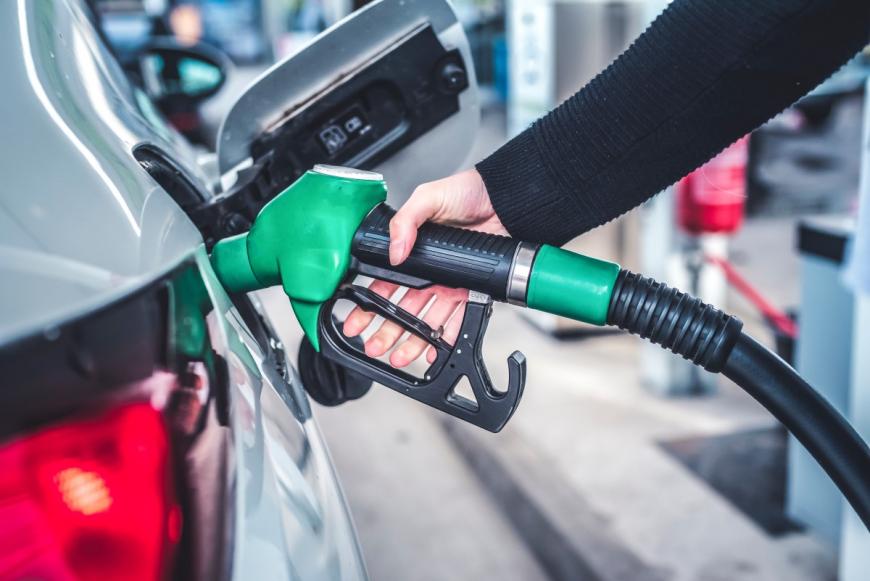
Four strategies for cutting your gas bills
Gas prices averaged $2.17 per gallon during 2020. Now they have just about doubled as the country emerges from the pandemic, more people are driving again, and the war in Ukraine creates uncertainty about oil supplies. Pumping gas has become a more stressful experience as a result. However, there are strategies you can use to reduce that stress and make every gallon and every penny count.
1) Get the Best Deal Possible
Compare prices with a gas app. Fuel prices can differ from one gas station to another and one part of town to another. Gas apps provide the cheapest prices in your area and often have extra perks like prices for different fuel grades, traffic updates and discounts. Do a little research online to find the best gas app for you, and avoid apps with a small number of downloads and/or bad reviews. One word of caution: while you might get a better deal at one station, be sure the fuel you consume getting there doesn’t offset the savings.
Take advantage of rewards programs. Use reward cards that gas stations, shopping clubs and some retail stores offer, which shave several cents from each gallon of gas. The more often you purchase items at that gas station or store, the greater the savings you can receive per gallon. Be sure that your purchases at these stores are items that you normally buy and that you factor in any membership or annual fees. Otherwise, these extra costs will eat up any money you save on fuel. NerdWallet provides helpful tips to determine if a rewards program is a good deal.
Avoid buying premium gas. Unless your vehicle requires premium, it should be safe to pump lower grade gasoline, including regular. The American Automobile Association (AAA) has found that even if your fuel economy increases with premium gas, you lose money because of its higher cost.
2) Examine Your Driving Habits
Drive calmly and steadily. Avoid aggressive acceleration and sudden braking. Fueleconomy.gov says that these two tactics can lower your miles per gallon (mpg) by 15-30% on the highway and 10–40% in stop-and-go traffic. When you increase your speed, do it moderately where possible. When stopping or slowing down, reduce your speed gradually. Cruise control also consumes gas more efficiently.
Stop prolonged idling. If you plan to stop for more than one minute, AAA recommends shutting off the engine to save fuel. You can adopt this practice, for example, every time you use the drive-thru for banking or picking up takeout. It usually takes more than 60 seconds to complete a banking transaction or get your food order.
Stay within the speed limit. Your vehicle’s gas mileage drops significantly when you drive more than 50 miles per hour (mph). The federal Alternative Fuels Data Center says that driving 5 to 10 mph slower can boost your miles per gallon by up to 14%. Staying below the speed limit during extended trips on interstate highways can achieve even greater fuel economy — up to 20% more miles per gallon in our experience.
3) Use Your Car Less
Carpool. Is there is someone you know who has a similar schedule, works where you do or close by, worships in the same faith community, goes to similar places to shop, or has kids in the same activities? Sharing rides will not only save you both money; it’s also a great way to include some social time in your schedule.
Take advantage of mass transit. Taking a bus or train can be a cost-effective and environmentally friendly option. The cost of a transit pass or transit card can be more than offset by the savings in gas and regular vehicle maintenance costs. If you are a Minnesota resident living in the Twin Cities, visit MetroTransit.org. For transit options and intercity bus service in Greater Minnesota, check out the MN Department of Transportation’s website. If you don’t live in Minnesota, check out your own state’s department of transportation website for alternatives to traveling by car.
Plan your trips. Every time you leave the house, be sure you’ve scheduled several stops before you return. This not only saves money; it can save you time as well.
Keep your car parked whenever possible. Is there a day during the week when you can avoid using your car? Is it necessary to make that trip today, or can you combine it with other trips tomorrow? Is that trip even necessary, or is it for purchasing something that you don’t really need? Is your destination within walking or biking distance?
4) Check Over Your Car
Keep your car in good shape. According to Fueleconomy.gov, if you keep your tires inflated to the manufacturer’s recommended air pressure, you can get up to 3% better gas mileage. Repairing serious problems (e.g., replacing a bad oxygen sensor) can increase fuel efficiency by as much as 40%.
Keep items off the roof. Putting items on your car’s roof creates wind resistance and increases gas consumption. Cargo boxes, for example, can cut mpg by as much as 8% in city driving and up to 25% when driving the interstates, according to Fueleconomy.gov. If you aren’t using these items, remove them.
Beware of gadgets. Devices to magically boost gas mileage don’t exist. In one test, Consumer Reports found that three alleged fuel savers didn’t make any difference in a car’s mpg, and one of them even reduced fuel economy.
Check your gas cap. If your gas cap is off, broken or loose, gas will evaporate — and so will some of the money you paid for it. Make sure your cap is intact and screwed on tightly.
LSS Financial Counseling can work with you to manage other expenses and create workable budgets. Our certified financial counselors are available for free, confidential appointments. Call at 888.577.2227 to schedule an appointment, or get your support online.

Co-author Ashley Hagelin is a Senior Program Manager with LSS Financial Counseling.

Co-author Mike Gude is a Marketing and Communications Specialist who provides support to LSS Financial Counseling.
